Way Down Under
Tasmania: Their wine and people
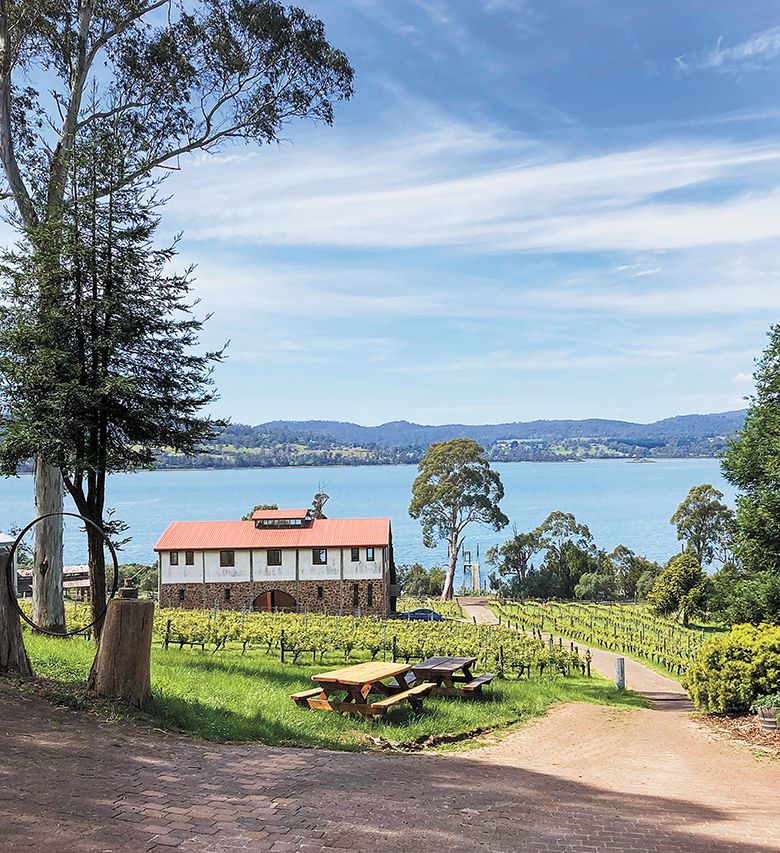
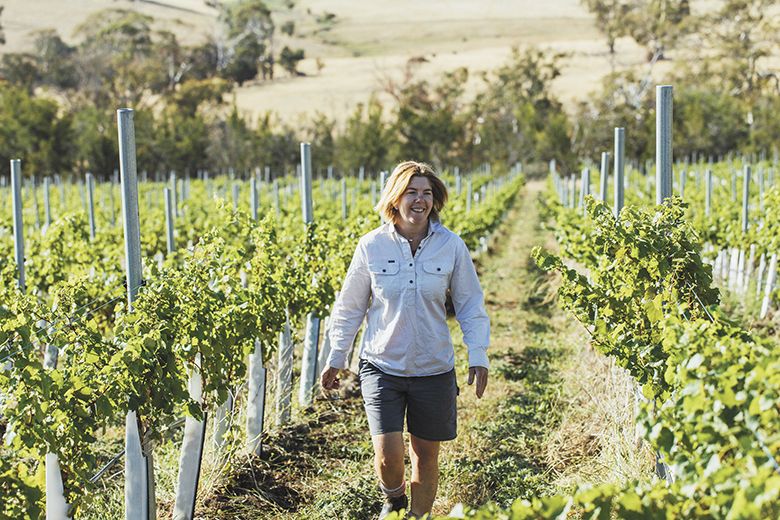
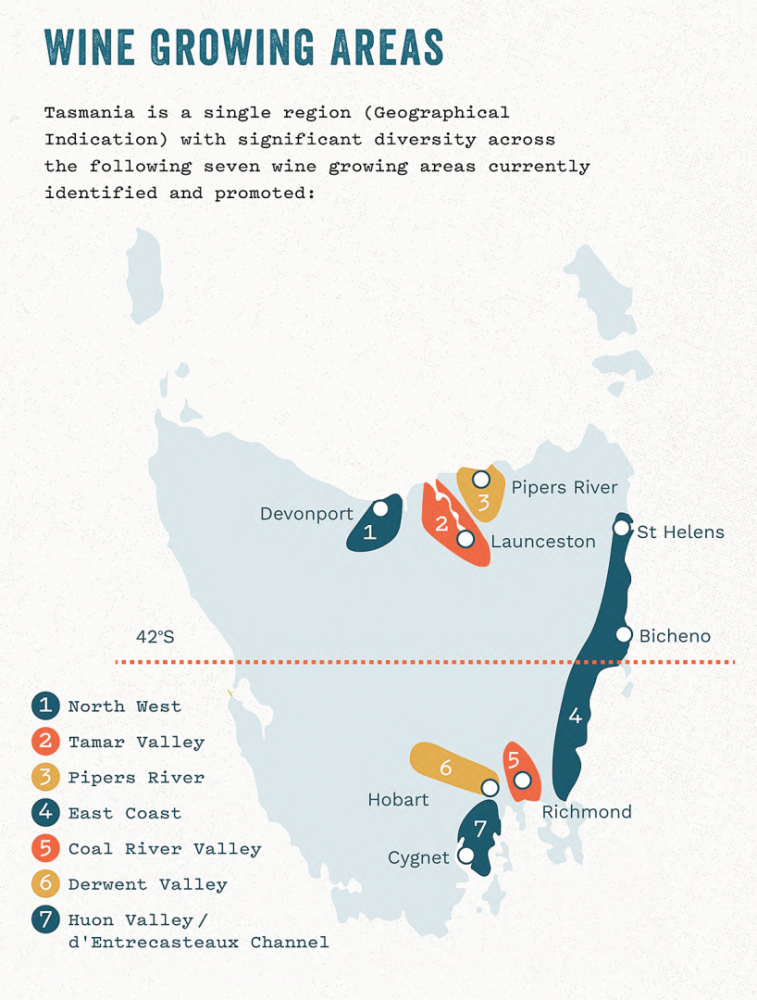
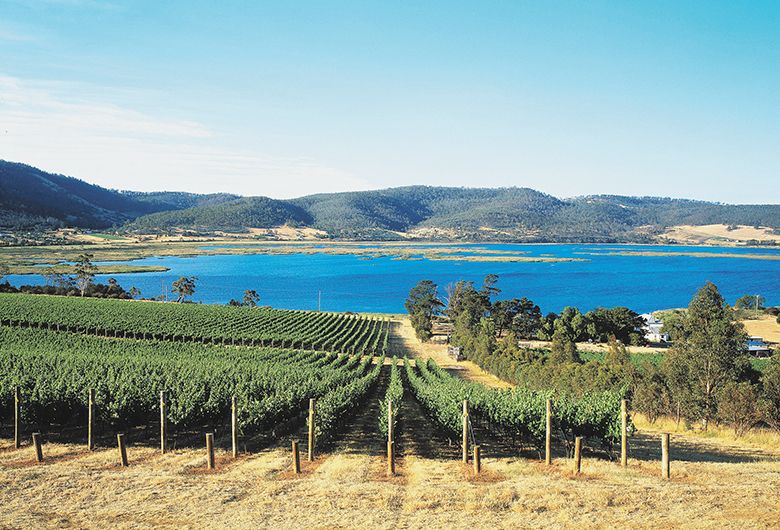
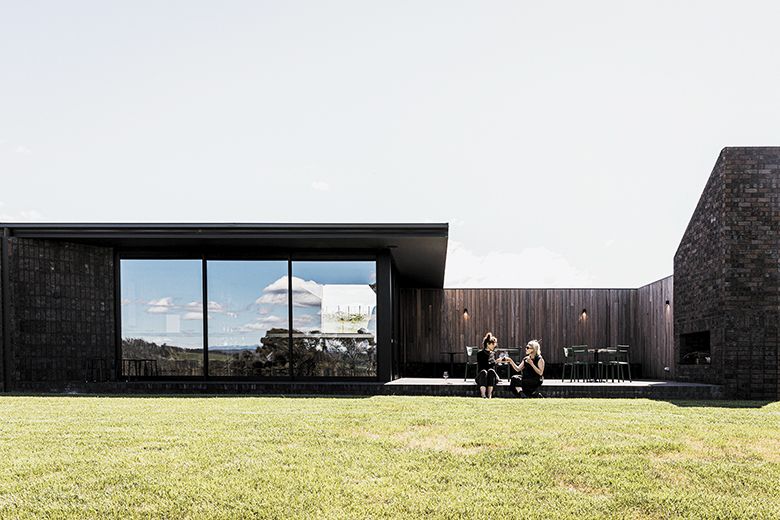
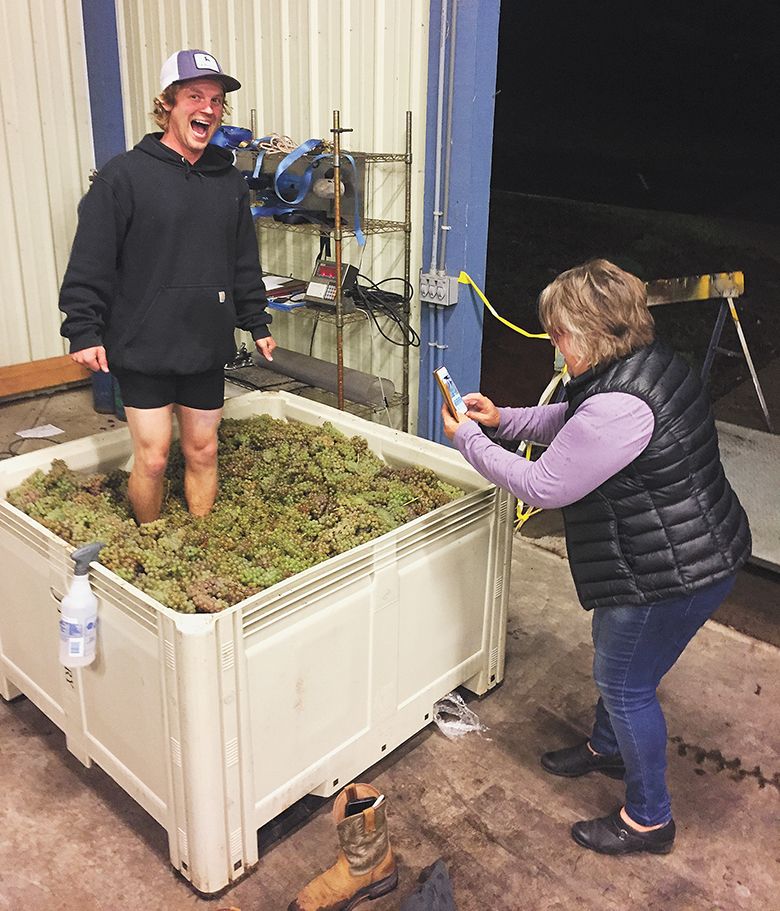
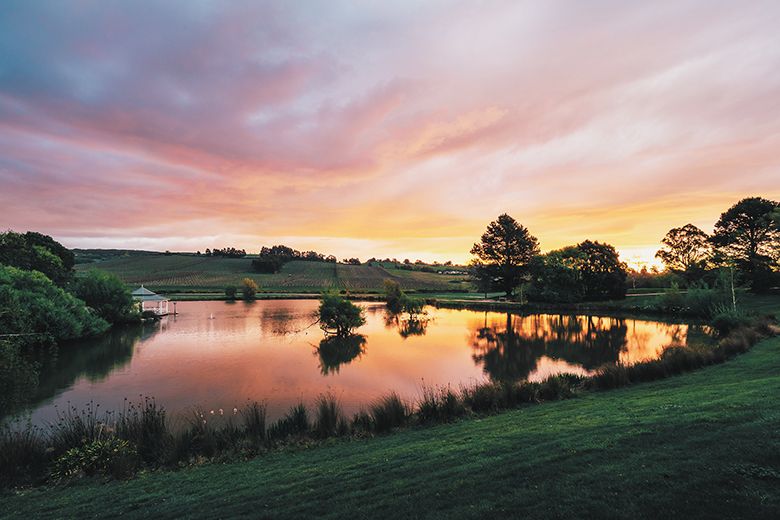
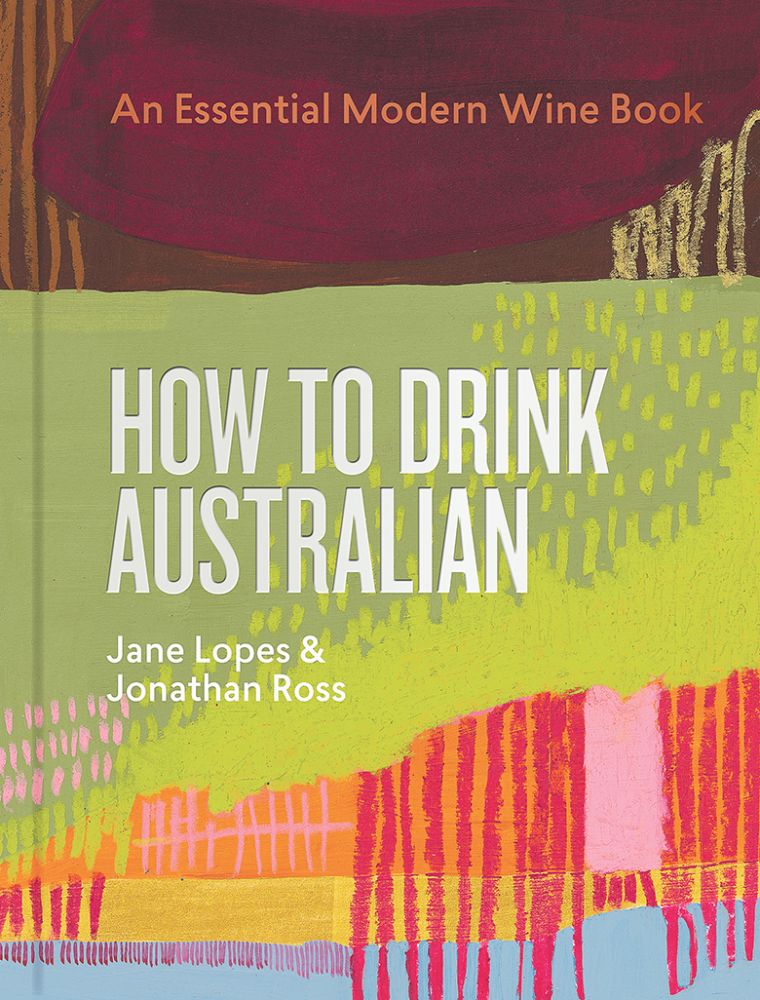
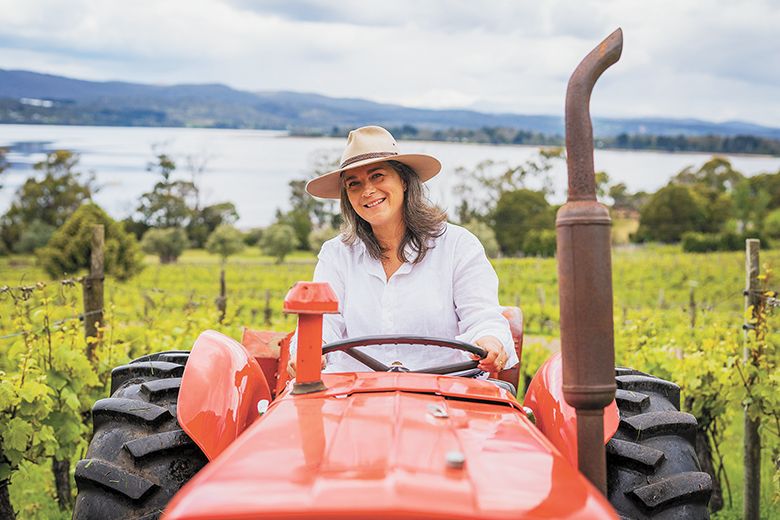
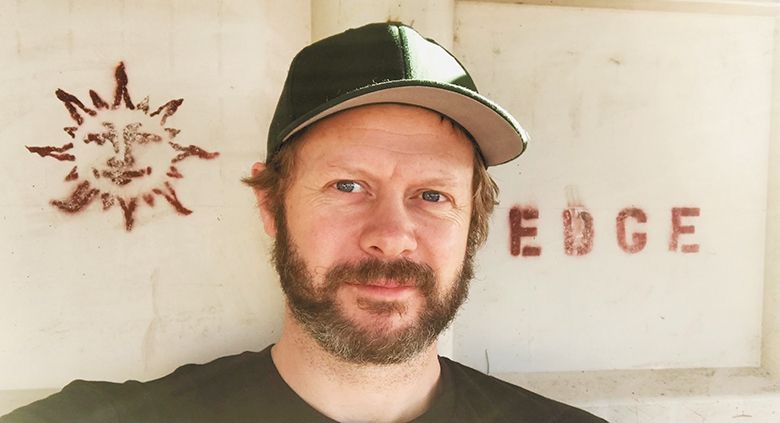
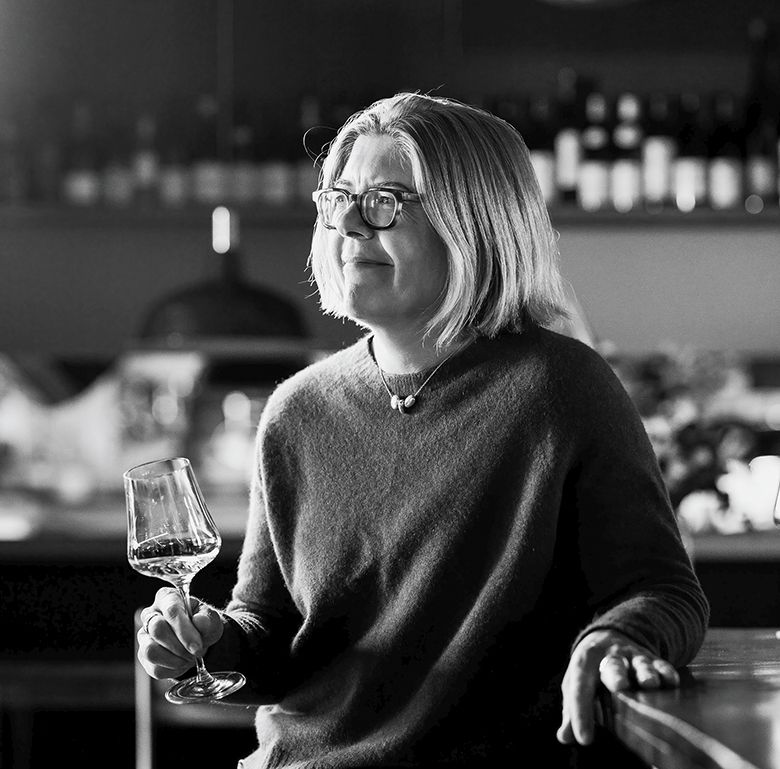
By Michele Francisco
It was like watching a horror movie. I closed my eyes but the crunch of breaking bones, tearing flesh and snarling growls was even more terrifying. I glanced down at the low fence, grateful for its protection from the hungry animals devouring a dead possum. It took mere minutes before the carcass was totally gone… bones, fur, organs… everything.
I’m on the island of Tasmania. This was my first encounter with Tasmanian Devils. In real life, they bear little resemblance to the cartoons… except for their threatening teeth.
After buying dramatically discounted tickets, my partner, Matt, and I let serendipity guide us, flying over 8000 miles to spend 10 days in Tasmania. While mainland Australia is well-known for Shiraz, we sought something more unique. We discovered it to the south, on the country’s heart-shaped island, positioned on the 42nd parallel. It’s also one of the world’s coolest wine-growing regions. Knowing next to nothing about Tasmanian wine, we were eager to sample and learn more.
Not only were we impressed by the wines, but also by the creativity and passion demonstrated by the people we met. Tasmania really could be Oregon’s sibling. Both regions share similarities and, I believe, have much to learn from one another.
The climate is too cold
Where have we heard this? Back in the ‘60s and early ‘70s, our wine pioneers ignored the opinions of well-meaning experts who believed it was too chilly to grow grapes in Oregon. While Tasmania has recorded plantings dating back to 1823, grape growing began gaining popularity less than 75 years ago. Winegrowers there heard the exact advice as they, too, ventured out, imagining what others considered impossible.
Esteemed wine climatologist and CEO of Abacela, Dr. Greg Jones, explains, “The resurgence of the two regions’ industries occurred nearly simultaneously, starting in the late 1950s in Tasmania; and during the mid-1960s in the Willamette Valley. At that time, the climates were roughly similar: cold limiting for viticulture with short growing seasons and too much rain during harvest.” Despite the early naysayers, however, both states have excelled at producing award-winning wines.
The recently published How to Drink Australian: An Essential Modern Wine Book, presents an accurate summary of the area. “Australia is a high-UV country (lots of sunlight). Take Tasmania: it’s a bit colder than Champagne in terms of heat summation, but sees nearly 1000 more sunlight hours in an average year than its European counterpart – 1000!... Here’s the bottom line: Australia’s sunny disposition, when grapes are matched to their appropriate climates, results in wines that have extreme depth of flavour coupled with extreme freshness. A winning and unique combination.”
Even with the sunshine, Jones notes, “Tasmania is the coolest wine region in all of Australia. Of course, the Willamette Valley is the coolest region in all of Oregon.” Numbers don’t lie. Jones, who has spent his career studying weather trends, observes that the “average growing season temperatures are roughly equivalent in Tasmania and the Willamette Valley.
Trends since the middle of the 1900s are similar in both regions, 2.0-3.0°F increases, along with slight declines in precipitation during some seasons. Warming in both areas has increased viability for consistently ripening cool climate wine grapes, resulting in two of the best Pinot Noir and Chardonnay-producing regions in the world today,” says Jones.
Mirrored histories
Reflecting on the first plantings in both areas, Jones points out more similarities. “Starting in the 1800s, the Willamette Valley and Tasmania have parallel histories– but different reasons for going dormant. Tasmania’s wine production, which wasn’t much in the mid-to-late 1800s, more or less ceased due to the Victorian Gold Rush. Prohibition destroyed our state’s nascent industry in the early 1900s.” Jones concludes, “But both were similar in that very few people were growing grapes due to the climate.”
By the numbers
According to Sheralee Davies, Wine Tasmania’s CEO, “Tasmania produced 0.9 percent of Australia’s total wine grape production, yet four percent of its total value.” In comparison, Oregon’s numbers are quite similar. Our state produces less than two percent of the total U.S. wine grape production, yet five-and-a-half percent of its total value. “Tasmania has 185 individual licensed wine producers throughout the state, with vineyards covering more than 2,400 hectares (5,930 acres),” says Davies. By comparison, a recent study revealed Oregon’s total 2022 harvested acres was over 40,000– nearly the size of the entire island of Tasmania.
Grape expectations
Jones observed another similarity– grape varietals. “Both Tasmania and the Willamette Valley grow similar varieties: Pinot Noir, Chardonnay, Sauvignon Blanc, Riesling, plus experimenting with more unusual grapes.” Because Tasmania produces substantial quantities of sparkling wines, it makes sense they also cultivate Pinot Meunier (the third most prevalent grape in traditional Champagne). During our travels, we also encountered Pinot Gris, Gewürztraminer and discovered Savagnin, Grüner Veltliner and Trousseau at Stoney Rise Wine Company in Northern Tasmania’s Tamar Valley.
Joe Holyman, Stoney Rise co-owner with wife Lou, built a boxy, wood-clad cellar door tasting space that would fit in perfectly if perched on an Oregon hillside. He shares some of the reasons they chose to plant these unusual varietals. “Lou and I only drink wine when eating. We think these three varietals are all great with food. That has always been a prerequisite for us when considering new plantings.” Holyman says, “We, along with a winery called Lark Hill, were the first in Australia to plant Grüner Veltliner. Climate-wise, we’re similar to Austria. However, we don’t experience the same weather extremes due to our proximity to the ocean, just 40km away (roughly 25 miles). It works well here. It’s a variety with great texture and acidity– both of which we really like,” he says.
Located a stone’s throw from the Tamar River, Holyman is thrilled with his choices. “Savagnin is great, it really shines with a bit of skin contact, and it’s briney character makes a great food wine,” says Holyman. “Strangely enough, I became interested in Trousseau initially from the Jura, but the versions that really excite me are those made by Arnot-Roberts in California. They are textural and savoury, how we like to make ours. We use clay pots because we want to fully express the great fruit characters,” explains Holyman.
Oregon connections
While Matt and I are only just learning about Tasmania, Tassies know a surprising amount about Oregon. We met numerous winemakers who have visited our state, including three who have crafted wine here. Cynthea Semmens is a second-generation winemaker at biodynamically-farmed Marion’s Vineyard (named after her mom) and Beautiful Isle Wines, a small project shared with her winemaking husband. Samantha Connew, a New Zealand transplant, makes wines in Tasmania’s Coal River Valley under her Stargazer Wines label. Peter Dredge is a prolific winemaker with many irons in the fire. Not only is he a partner and head winemaker at Meadowbank, he also runs several personal endeavors; Dr. Edge Wines (a play on his surname), a new custom crush facility called Dr. Island Winemaking Tasmania, and Brian (a label collaboration with Joe Holyman of Stoney Rise Wine Company and Mike Bennie, a co-author of How to Drink Australian).
The name Stargazer is a reference to Abel Tasman, a Dutch explorer credited as the first European to sight both Tasmania and New Zealand, mere days apart. No doubt Tasman spent hours studying the stars as he navigated the seas between Europe and the Southern Islands. As a Kiwi who has adopted Tasmania as home, Connew feels a personal connection with the explorer.
She began her journey in wine after a fortuitous, unexpected encounter with two Oregon wine pioneers. Connew explains what brought her here: “Well, pragmatically because Pat and Joe Campbell from Elk Cove offered me a job! They came into the wine bar in Christchurch, New Zealand, where I was working while studying, and pretty much offered me a vintage gig on the spot.” She continues, “But Oregon was on the radar for me anyway– I’d had lots of mates who had done vintage there so it seemed like a bit of a hub for Kiwi and Aussie vintage interns. And then, the opportunity to work with Pinot Noir… well, enough said!”
Connew’s enthusiasm for wine– and Oregon– is undeniable. Regarding her experience working here, she exclaims, “Oh, where to start? My first ever vintage was 1997, so it was really make or break in terms of if I was going to pursue winemaking as a career. There was never a moment of hesitation after my first harvest. I loved every second of it.” She continues, “A lot of that was because of the amazing culture of generosity and hospitality shown by the Campbells, but also by everyone else in the winemaking community in Oregon. This was reinforced in 2001, when I returned to work a vintage at Beaux Frères.”
Unlike Connew’s chance journey to Oregon, Semmens and Dredge followed a more intentional, thoughtful approach. “When I worked at Petaluma in the late ‘90s and most of the 2000s, Argyle Winery shared mutual owners,” explains Dredge. “The wineries developed a great intern exchange program between 2000-2008. Some Oregon interns worked with me at Petaluma’s sister winery, Bay of Fires, located in Tasmania. In 2015, I decided to head over there to evaluate custom crush facilities and co-ops with a mind of starting one in Tasmania.”
Years earlier, after a devastating discus injury left Dredge deaf in one ear and required months of rehab to relearn to walk, family connections and the promise of a quick dollar led him into the wine industry. By the end of his first harvest, Dredge had fallen in love with wine, prompting him to shift his studies to enology. Hard work and dedication contributed to his growing reputation in Adelaide, and later in Tasmania. He launched Dr. Edge Wines mere months before traveling to Oregon.
Having grown up in the wine industry, Semmens made use of her dual citizenship. She says, “I was born in Northern California before my parents moved our family to Tasmania. I was able to come and go, living and working in the Napa Valley for five years in the early ‘90s.” Many years later, Semmens set her sights on Europe. Semmens recalls, “I was trying to work a vintage in France but was considered too old! I decided the next best thing was harvest with a French family in Oregon. I worked the 2006 vintage with Domaine Drouhin as a full winemaker alongside Véronique Boss-Drouhin and her team.”
Semmens’ parents, Mark and Marion, are considered Tamar Valley wine pioneers after planting grapes in 1979 and opening the region’s first cellar door in 1983. The 7.8-hectare site, originally a thriving apple orchard, inspired the labels on Semmens’ Beautiful Isles wines. Shaded by towering redwood trees, she works alongside her mother, maintaining the organic and biodynamically-farmed vineyard stretching to the river’s edge and pier where apples were once loaded onto ships bound for England.
First impressions
Semmens reminisces about her time in Oregon. “I had a fabulous experience. I was way overqualified for a vintage position but enjoyed a different and European perspective of winemaking with a close-knit family. It was a quick vintage, due to a warm start, and I loved how we were embraced by the family and shared their history, older wines and family values,” she says.
“So, my first vintage (also my first Pinot Noir vintage) was in 1997, 27 long, long years ago,” recalls Connew. “To set the scene: the radio hit that autumn in Oregon was Chumbawamba’s ‘Tubthumping,’ playing LOUD in the old Ford truck as we thrashed around the Elk Cove Vineyard outside of Gaston in the Willamette Valley, scaring birds.” She continues, “Most of my first week or so was spent in the La Bohème Vineyard, removing all the upper bunches, wings and second crop from the grapevines, planted in 1985. The remainder of vintage was spent doing endless punchdowns in neoprene waders in the 2-tonne fruit picking bins. With over 40 fermenters and punchdowns three times a day, by the time you finished, it was time to start all over again.”
Dredge, who worked initially at The Carlton Winemakers Studio, returned to Oregon as an intern and in-house producer at Keeler Estate Vineyard between 2017 and 2019. He describes his experience as “Enlightening. Viticulturally, I found the region far more contemporary than Australia. In particular, advancements in certified sustainable, organic and biodynamic practice.” Dredge used his Oregon friendships and connections to purchase Willamette Valley fruit and produce Pinot Noir here. (It was fascinating tasting his Oregon Pinots alongside those crafted in Tasmania.)
Tassies impressed Oregonians, too
Elk Cove Vineyards’ owner and winemaker Adam Campbell has followed Connew’s wine career over the many years since their first meeting. He says, “We absolutely love it when folks who start off with us at the beginning of their career go on to do amazing things. At Elk Cove, no one has had as much success in the wine world as Sam Connew, one of our 1997 harvest interns.” Campbell continues, “We have been so excited to track her winemaking trajectory from across the Pacific and are incredibly happy for her, especially when we can do that by enjoying one of her wines.” Their bond remains strong; Campbell traveled to Tasmania last month with plans to visit Connew.
Domaine Drouhin Oregon’s winemaker Véronique Boss-Drouhin describes her memory of Semmens. “I remember a young woman eager to learn a lot; she was so curious about everything. At the end of harvest, she told me, ‘I am taking home the humble pleasure of letting the fruit speak and not interfering too much in Mother Nature’s work.’ How well she understood this simple truth!” Boss-Drouhin recalls, “I also remember how proud she was of her mother’s work and Tassie wines. I have not had a chance to visit Tasmania but am sure she is doing very well.”
“Peter worked at the Studio in 2015,” says Anthony King, general manager at The Carlton Winemakers Studio. “Matt Perry (now the winemaker at 00 Wines) worked for him in Tasmania and invited Peter to join us for the vintage,” recalls King. “Peter specifically wanted to see how our model worked in person. Our tenant winemakers treated Peter more as a trusted colleague than a traditional intern. It was really nice to be able to ask him to rack or run the press and completely trust his technique and judgment,” says King.
He continues, “The Studio did not run as efficiently as it does now. After harvest, I asked Peter for feedback. He responded with a laundry list of changes that were all dead-on, very helpful feedback for the crew. We all have a ton of respect for Peter and his winemaking… and he is a super good person.”
Tasmania through an Oregon lens
Kevin Healy, winemaker at Kè-Vin Wines, is one of the many friends Dredge made in Oregon. They met at The Carlton Winemakers Studio and worked together again when Healy traveled to Tasmania for the 2016, 2017 and 2019 harvests. I doubt another Oregon winemaker has spent more time on the island so I was eager to learn his thoughts about Tasmania. Healy says, “The biggest similarity, that immediately stuck out to me, was how the different landscapes across Tasmania reminded me of Oregon. Tasmania is full of rural farms and ranches, a flourishing ecotourism industry and ‘artsy’ city centers.” He recalls, “There was a real feeling of ‘roughing it’ in rural Tasmania, a very appealing philosophy to me. There was little help in the vineyards and wineries, no ‘winery supply’ stores and most fermenters were repurposed dairy tanks. Every winemaker and vineyard owner I met in Tasmania had that special kind of ‘crazy’ it takes to carve out a respected wine industry in such a remote place. To me, Tasmania was living in a time similar to that of the ‘good old days’ of the Willamette Valley, and that’s what I loved about it.”
A knack for innovation, coupled with a rugged can-do attitude, seems second nature for those living on a secluded island below a larger island. Skilled vineyard labor is scarce, so very little can be contracted out to others. It’s common to see owners driving the tractors, handling much of the vineyard maintenance themselves. After crafting wines in the cellar, they often run their own bottling lines too. Most Tassie winemakers acquire a deep familiarity with their land and wine as they operate their “soup to nuts” wineries. I tasted that intimacy and connection reflected in their flawless, particularly well-balanced wines.
An independent spirit
As stated in How to Drink Australian, “There is an independent spirit to the island, supported by local consumption as well as a fascination from sommeliers and collectors across Australia (and, increasingly, the world).” Since very little Tassie wine makes its way to the U.S., serious Pinot lovers should book a visit to Tasmania. It really is a hop, skip and a jump from mainland Australia– less than 2 hours by air. (To make planning easy, all the wineries we visited are in the sidebar.)
Also from the book: “Tasmania is still a young wine region that is evolving rapidly and settling into its position as one of the spots for premium cool-climate Australian varieties. Its current generation is not only skilled, but also increasingly collegiate, cooperative and inquisitive– focused on maintaining momentum and upward trajectory, as well as fortifying their identity against the unknowns of the future.” Go experience it!
To learn more, visit www.winetasmania.com.au and purchase How to Drink Australian from your favorite book shop.
Tasmanian wineries we visited
Tamar Valley (near Launceston)
Tamar Ridge: tamarridge.com.au
Stoney Rise Wine Company: stoneyrise.com
Marion’s Vineyard: marionsvineyard.com.au
Josef Chromy Wines: josefchromy.com.au
Jansz Tasmania: jansz.com.au
Coal River Valley (near Hobart)
Dr. Edge Winemaking: dr-edge.com
Pooley Wines: pooleywines.com.au
Stargazer Wines: stargazerwine.com.au
Derwent Valley (near Hobart)
Stefano Lubiana Wines: slw.com.au
Derwent Estate: derwentestate.com.au
Moorilla & Domaine A (located at the MONA): moorilla.com.au, domaine-a.com.au
Hobart’s only urban winery
Glaetzer-Dixon Family Winemakers: gdfwinemakers.com
Q & A with Cynthea Semmens
What lessons did you learn while in Oregon?
Australian winemakers are known to be technically precise. The vintage I was there for was a little different with natural white fermentations going very warm and decisions not to use chilling. Stylistically though, Australia was heading toward more elegant, leaner Chardonnay styles and the U.S.A. preferred richer, more alcohol-driven wines.
What similarities and/or differences did you observe between Tassie and Oregon wines?
I find, generally speaking, Tasmanian wines are less alcoholic that the northern U.S. counterparts. Ours run around 12-13.5 percent alcohol and the Oregon wines I’ve tried recently are in the 14+ range. We don’t get so hot during the days– perhaps in Southern Tasmania they do– but not up here in the north. Stylistically, they are made with similar methods to enhance flavour such as whole bunch, cold soak, stems, whole berries. There are lots of elements with which to play. At DDO, we put a lot of Pinot Noir through rotary fermenters, not something used widely in Tassie.
Did your time in Oregon influence how you make wine today?
I was greatly influenced by the camaraderie in Oregon– the sharing of knowledge and desire to make the state the best-known area for Pinot Noir. This is something I think we both share. Also linking the food of the area to the wine style was a little more advanced in Oregon than it was here in Tassie. My vintage was a while ago and organic/regenerative/biodynamic practices were not nearly as prolific in Oregon then. I have been inspired by many Oregon producers, including my favourite, Mimi Casteel, to follow the reduced chemical input path. Her influence has been huge in my continued pursuit of true terroir. Tasmanians are aware of the information and considering the best steps toward a more sustainable growing in our unique climate.
What do you think Oregon can learn from Tasmania?
Hmmmmm, the Oregon industry is a little older than ours, but I guess our greatest advantage is that we are an island… protected from rapid growth because there is an expensive waterway between us and the mainland. That makes people think twice. It keeps us beautifully unique and different. It also provides biosecurity advantages since we don’t have phylloxera yet. We are also unique from a marketing perspective. Perhaps Oregon could think more like an island?
What can you learn from Oregon?
Even in 2006, Oregon had a strong direct-to-consumer trade through cellar doors and wine clubs, exclusive dinners, etc. I think while Tassie has some of this, we could learn from Oregon how to better maximise it.
Q & A with Peter Dredge
What lessons did you learn while in Oregon?
Although more advanced viticultural, The Pacific North West is a hell of a long way to travel only to realise Tasmania is a far superior grape-growing district, ha ha! I also learnt an enormous amount from Anthony King regarding custom crush business models from purely ‘in-house’ design to fully autonomous facilities like the Carlton Studio for clients to use with their own interns.
What similarities and/or differences did you observe between Tassie and Oregon wines?
Cool climate and Pinot Noir go hand in hand, depth and vibrance from long growing seasons and natural acid retention produce a far superior wine than warmth, alcohol and heavy extraction.
Did your time in Oregon influence how you make wine today?
Yes, I’ve never met a more aggressive strain of brettanomyces in my life– its hygiene, sulphur and nuclear-warhead-style resistant. It’s helped me question vineyard and oak practice (if any) to a greater degree. Not necessarily to avoid, but at least temper the dark lord (we refer to Brett as the dark lord in Australia). It also taught me that making wine from afar is great and romantic and cool until something goes wrong (like a pandemic) and then you’re marooned. Flying winemaking is not for the faint-hearted.
What do you think Oregon can learn from Tasmania?
Trying to encapsulate “Burgundy” in your grandiose-style cellar door offering shouldn’t be the path forward. Oregon and Tasmania are unique in place and culture. This should be the focus.
Q & A with Samantha Connew
What lessons did you learn while in Oregon?
I learnt that 1.) Pinot Noir winemaking is as much about what happens in the vineyard as in the winery, 2.) gravity is your friend and, 3.) putting on waders after a 120kg man has worn them in 30-degree ferments is not fun.
My second Pinot Noir vintage was in 2001 and also in Oregon, this time at Beaux Frères. Again, I spent a fair chunk of time in the vineyard, with some of the newer Dijon clones, as well as the mainstays of Pommard and Wädenswil. This time, punchdowns omitted the waders and were hand-plunged, good for the triceps. American rapper Missy Elliot’s ‘Get Ur Freak On’ was on the radio and it was the first time I got to drink Domaine de la Romanée Conti, a very memorable bottle of 1978 La Tâche– thank you Robert Parker, Jr.
While at Beaux Frères, I learnt that 1.) Pinot Noir winemaking is as much about what happens in the vineyard as in the winery, 2.) you can make really good friends over endless hours spent at the sorting table, and 3.) wild ferments need lots of care and attention.
What similarities and/or differences did you observe between Tassie and Oregon wines?
I think both regions have the ability to make Pinot Noir wines that sit nicely in the zone between red and blue fruits with a savoury undercurrent, moderate alcohol and beautiful aromatics, with plenty of mid-palate weight and fine-grained tannin.
Did your time in Oregon influence how you make wine today?
Not just how I make wine but also how I grow grapes! As is evident from my thoughts above, it was obvious very early on how important it was to get it right in the vineyard before you can even think about making great wine in the winery. That lesson has and continues to stand me in good stead as a winemaker. Secondly, that the attention to detail in the vineyard needs to be matched by diligence and gentle handling in the winery to really get the most out of the fruit.
I had such a great couple of vintages in Oregon, met some amazing people who are still friends today and, obviously, what I learnt still continues to resonate. The culture really set the benchmark for how I have approached every subsequent vintage so I hope that whilst Oregon has grown enormously, that beautiful thread of openness and curiosity is still very much to the fore.
What do you think Oregon can learn from Tasmania?
I would never, ever, ever be presumptuous enough to tell anyone else what they can learn, especially from a young grape growing region like Tasmania!
Michele Francisco spent her childhood reading and writing, eventually graduating from UCLA with an English degree. She attended graphic design school and began a career in design and marketing. After moving to Oregon in 2010, Michele studied wine at Chemeketa Community College and began Winerabble, a Northwest-focused wine blog. She has been a cheerleader for Oregon wine since her arrival.










